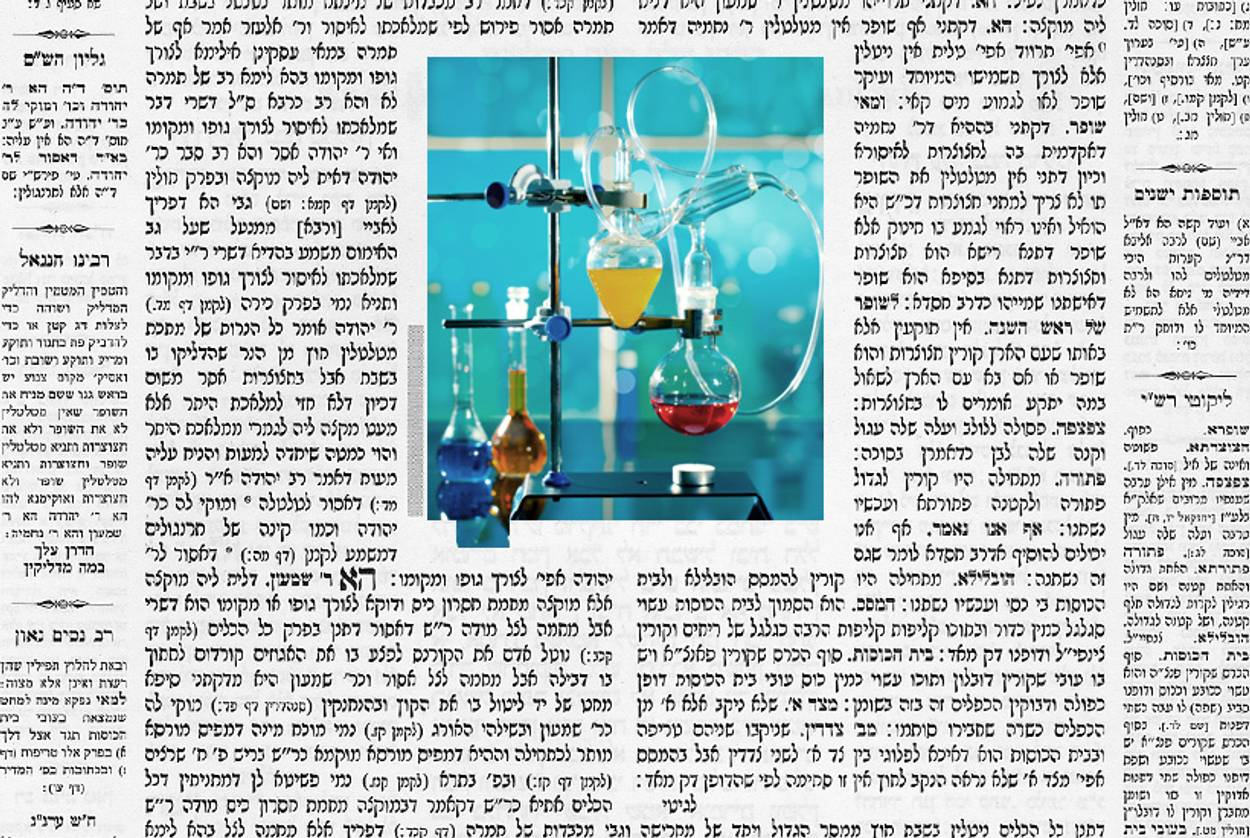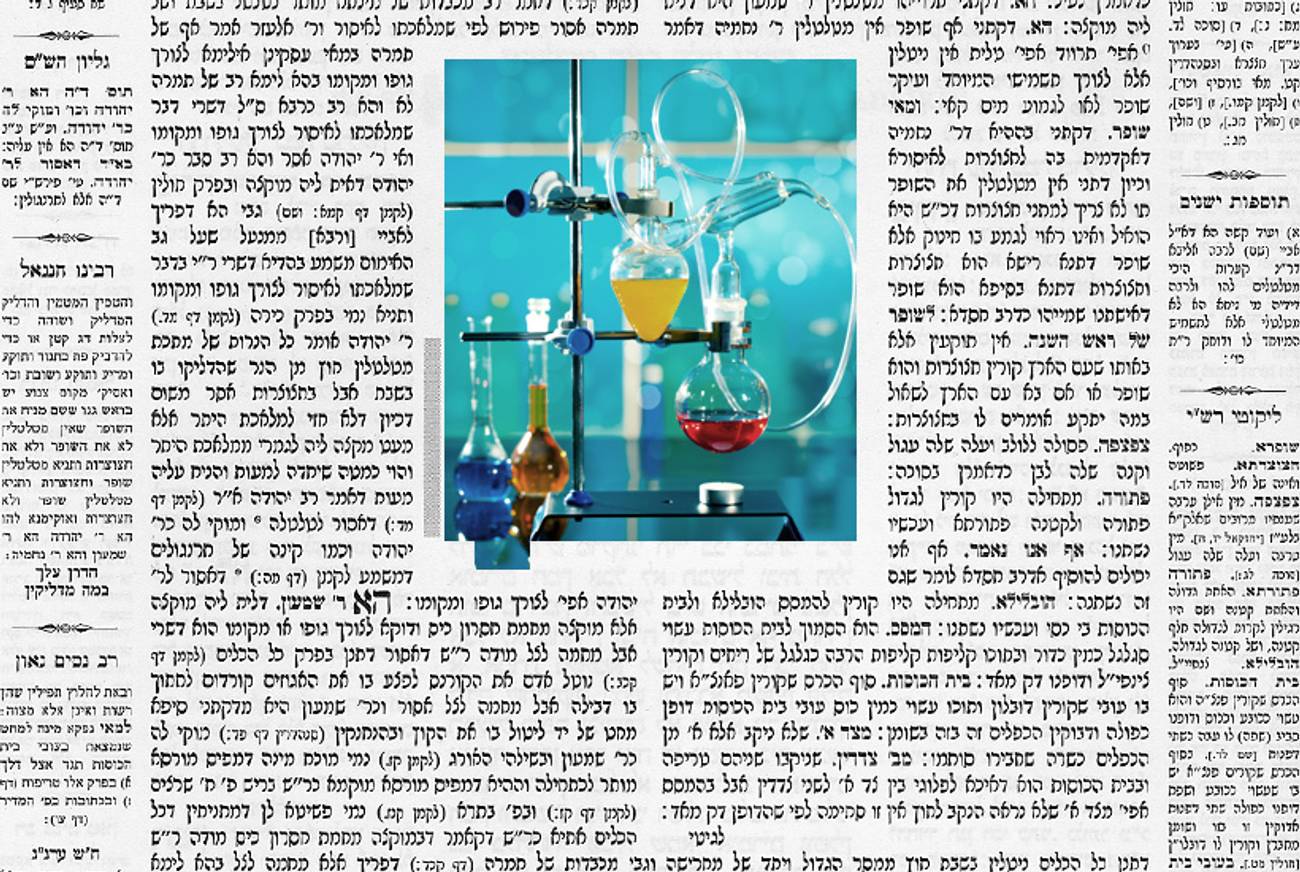What Happens When the Talmud Asks, ‘What If?’
Probing hypothetical, metaphysical problems was the rabbis’ way of defining what matters most in Judaism




Literary criticAdam Kirschis readinga page of Talmud a day, along with Jews around the world.
Throughout the Talmud’s description of the Yom Kippur ceremony—the ongoing subject of Tractate Yoma—the rabbis have displayed what might seem like an excessive concern for what might go wrong. In the whole history of the Temple, for instance, it seems unlikely that a single high priest died during the performance of his duties in the Holy of Holies. But the Talmud worries repeatedly about what to do if this should happen. Such attention to unlikely or purely hypothetical cases is highly characteristic of the Talmud, and it can make the reader impatient: Why did the rabbis bother with such remote, academic speculations?
I’ve found it useful, in the course of reading Daf Yomi, to think of these kinds of questions as the rabbis’ indirect way of asking about definitions and essences. In laying down the Shabbat laws, for instance, one rabbi asks whether transporting saliva in one’s mouth is considered “carrying,” in which case one would have to spit it out every few paces. The point of the question, it seems to me, is not whether a Jew should go around spitting all the time, but exactly how to define a substance: Is matter within the body a separate entity, or part of the body itself? This kind of speculation about substances and their qualities was central to classical and medieval thought, including Jewish thought. Because Jewish law deals with everyday matters, it produces a kind of everyday metaphysics.
The concern for precise definitions could be seen at work in this week’s Daf Yomi reading, which included the end of Chapter 5 of Tractate Yoma and the beginning of Chapter 6. It has been clear since the beginning of Yoma that the ritual performed by the high priest on Yom Kippur is highly choreographed, with a series of steps that must be performed in exactly the right order. In Yoma 60a, the mishna makes that rule explicit: “Each action of Yom Kippur [is] stated in order. If the high priest performed one of the actions before another, he has done nothing.”
What happens, then, if some accident prevents the high priest from doing things in the right way? Much of the Yom Kippur service deals with blood: Blood from the sacrificial bull is caught in a bowl, stirred, sprinkled in the Holy of Holies, and then sprinkled again on the altar in the sanctuary. This means that the high priest must carry around a bowl full of blood, and while it’s hard to imagine the him actually dying during the ceremony, it’s easy to imagine him tripping and spilling the blood by accident. If that should happen, what does the high priest do? Does he have to start the whole service over from the beginning, by slaughtering a new bull? Or can he simply resume the service from the point where he was cut off?
To answer these questions, the rabbis have to decide exactly which elements of the Yom Kippur service constitute its essence and which are dispensable. Rabbi Yehuda states that the essential actions are those “performed in white garments inside the sanctuary”: that is, burning the incense in the Holy of Holies and sprinkling the blood on the corners of the altar. After the blood is sprinkled, any left-over blood is supposed to be poured over the base of the altar. According to Yehuda, this part of the ceremony is also essential, since it is performed by the high priest in white garments. But according to Rabbi Nechemya, the disposal of the extra blood is inessential, and if the high priest leaves it out, he doesn’t need to go back to the beginning and repeat it.
This controversy, in which both rabbis appeal to the text of Leviticus for support, has a theoretical significance as well as a practical one. The Yom Kippur sacrifice is meant to gain atonement for the sins of the high priest personally and of all the people of Israel. It is a series of physical actions that achieves a transcendental effect. But at what moment, exactly, does the physical turn into the divine? In their thought experiments, the rabbis are cutting off little pieces of the ceremony and asking whether what’s left over is still holy.
Another kind of thought experiment can be seen in Yoma 59a-b, where the Gemara addresses what happens to the sacrificial blood after the Temple service is over. The Temple was, as we have seen before, a fairly bloody environment, and its engineers designed a system of canals and drains in the floor for washing the blood away. This effluent was discharged into the Kidron River, where gardeners would collect it and use it as fertilizer. However, they had to pay the Temple for permission to do this; otherwise, they would be guilty of the crime of me’ilah, the unauthorized use of consecrated property.
The definition of me’ilah has already served, in earlier sections of Talmud we have read, to help the rabbis clarify exactly what it means for something to be consecrated. In one passage, for instance, the rabbis debated whether it was permitted for someone to sit in the shade cast by the Temple’s walls. If the purpose of the Temple is to glorify God, then isn’t taking advantage of its shade a misuse of God’s property? (In that case, the Talmud decided that it was not, and sitting in the shade was permitted.)
In Yoma, the question is whether blood that has been used in the performance of a mitzvah remains consecrated after the mitzvah is over. Once the blood has been sprinkled and washed away, is it still subject to me’ilah? In general, the Gemara holds that it is not: “There is nothing whose mitzvah has been performed that is still subject to me’ilah.” According to Rabbi Meir and Rabbi Shimon, however, me’ilah still applies here.
The difference of opinion seems to come down to whether the blood in question belongs to the Temple or to the whole people of Israel. Ulla cites Leviticus 17:11, which says, “For the life of the flesh is in the blood, and I have given it to you upon the altar to make atonement for your souls.” “To you,” Ulla believes, means that it belongs to the people, not to the Temple or the priests; and so the people can make use of it, including for fertilizer. It would seem, then, that in Ulla’s opinion the gardeners shouldn’t have to pay the Temple for use of the blood, as the Mishnah requires. But the Talmud doesn’t seem to take that view, and I’m not sure whether I’ve grasped all the nuances of the debate.
Finally, a third thought experiment in this week’s reading dealt with the mysterious matter of the scapegoat, which is the major subject of Chapter 6. The word “scapegoat” comes from the ritual prescribed in Leviticus 16, in which the high priest takes two identical goats and casts lots, assigning one to be sacrificed in the Temple and the other to be led into the wilderness “for Azazel.” (Just who or what Azazel might be is a question I hope the Talmud will address; according to some sources it is a place name, while others have thought it was the name of a demon.)
In Yoma 64a, the Talmud probes the nature of the link between the two goats chosen in the lottery. What happens if one of the goats dies before the ceremony is complete? Say that the goat marked for Azazel dies, while the goat for God is still alive. The high priest would then have to take a new pair of goats and cast the lots over them a second time. But then he is left with two goats marked for God—the surviving goat from the first pair and the new goat from the second pair. How can both these goats be consecrated for the same purpose? They can’t both be offered up to God, since the Yom Kippur ritual demands only one goat.
So, should the first goat be sacrificed and the second left to graze “until it becomes unfit,” or should the second be sacrificed and the first left to graze? To answer this question involves figuring out whether the two goats in the lottery are joined in some metaphysical sense, or whether their fates can be separated. (I can’t help thinking of the idea of entanglement in quantum physics, which says that two particles can be linked so that they affect one another even at a distance.) The problem is debated at great length in the Gemara, as the rabbis bring in various parallels involving other types of sacrifices. I look forward to finding out the solution, and other details about the scapegoat, as Tractate Yoma continues.
***
Like this article? Sign up for ourDaily Digestto get Tablet Magazine’s new content in your inbox each morning
Adam Kirsch is a poet and literary critic, whose books include The People and the Books: 18 Classics of Jewish Literature.
Adam Kirsch is a poet and literary critic, whose books include The People and the Books: 18 Classics of Jewish Literature.